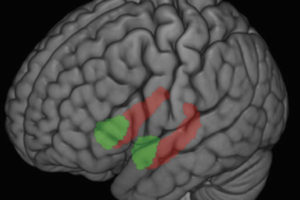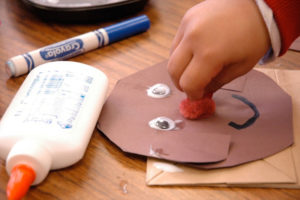Although having a busy schedule can sometimes be stressful, it might be a good thing for your brain and well-being. Especially if you’re doing multiple different tasks or activities.
A study led by postdoctoral fellow Emily Urban-Wojcik, PhD, from the Center for Healthy Minds (CHM) at the University of Wisconsin-Madison, found that a greater diversity of daily activities is associated with higher volume in the adult hippocampus – a region of the brain involved in learning, memory formation, spatial navigation and stress regulation.
Activity diversity refers to the range of daily activities a person performs, like working, volunteering, picking up kids from school, playing soccer, or engaging in social activities, and the relative time spent in each of these activities such that time is spread more equally across them.
People with high activity diversity show better psychological well-being and positive affect regardless of the total amount of time spent in all activities combined. They also show better cognitive function such as episodic memory and executive function, which has also been linked to the hippocampus. Urban-Wojcik and colleagues wanted to understand the link between activity diversity and hippocampal volume, and secondarily, how the two relate to cognitive function.
"A more structurally sound hippocampus is hopefully going to be better as people get older, and help keep cognitive skills intact."
Participants for this study were part of the Midlife in the United States (MIDUS) study, a large longitudinal study aimed at understanding how Americans age. For eight days, participants reported how much time they spent engaging in different activities. These included paid work, interacting with children, leisure, physical activities, volunteering, and helping others. They also underwent magnetic resonance imaging (MRI) to obtain structural images of the brain.
Urban-Wojcik and colleagues found that individuals who engaged in more diverse activities across the eight days had larger hippocampal volume. These results were not dependent on the participants’ overall activity level in general, or their age, gender, education, race, and subjective physical health.
“What we do in everyday life impacts and is impacted by our brain structure,” says Urban-Wojcik. “It's pretty fascinating that from one week of looking at people's activities, we see this relationship [with brain structure].” This is true for people who engage in not just more activities in general, but more diverse activities.
The hippocampus is influenced by new experiences and environments. It is also one of the few regions of the brain where new neurons continue to be generated across the lifespan, a process that is sensitive to environmental stimulation.
Although this study did not find an association between hippocampal volume and cognition, previous studies link larger hippocampal volume to better cognition, whereas smaller hippocampi relate to poorer executive function in people with major depression.

“A more structurally sound hippocampus is hopefully going to be better as people get older, and help keep cognitive skills intact’” says Urban-Wojcik. Like many brain structures, the hippocampus gets smaller with age. Lower hippocampal volume has also been associated with depression and other mental illnesses. Continuing this research to understand whether having more diversity of activities leads to more hippocampal neurogenesis – or growth of new neurons – could have implications on improvement in mental health and well-being, Urban-Wojcik explains.
What remains unknown is the direction of the relationship between activity diversity and hippocampal volume. It is possible, says Urban-Wojcik, that people who have a larger hippocampus have greater capacity to engage in more diverse activities. “But that's something that we want to examine in the future since we are currently bringing the MIDUS sample back to reimage their brain structure.”
Next steps on this research also involve looking at the specific types of activities performed. Stacey Schaefer, PhD, principal investigator of the study, explains that physical activity such as exercise can have profound effects on the hippocampus. “Teasing out the contributions of different activities might point to which components of activity diversity are the most crucial,” says Schaefer. “Nevertheless, the findings from this study suggest that activity diversity is perhaps a novel route to wellness.”
By: Charlene N. Rivera-Bonet






